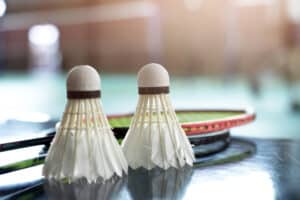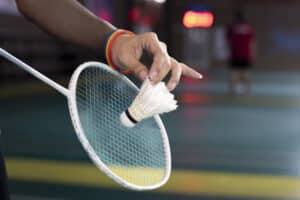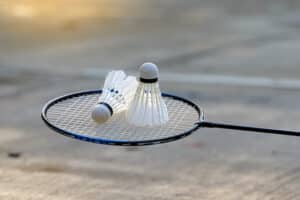Is feather shuttlecock heavier than plastic?
Key Takeaways
- Feather shuttlecocks typically weigh around 4.74 to 5.50 grams.
- Plastic shuttlecocks typically weigh around 5.50 to 5.60 grams.
- Feather shuttlecocks are generally lighter than plastic shuttlecocks, which can affect gameplay for professional or competitive players.
Feather and plastic shuttlecocks are the two main types of shuttlecocks used in the sport of badminton. They have distinct differences in terms of performance, durability, and price. One important factor that players often consider is the weight of the shuttlecock. In this article, we will explore whether feather shuttlecocks are heavier than plastic shuttlecocks, providing you with all the necessary information to make an informed decision.
Feather Shuttlecock Weight
According to a source from Decathlon[1], feather shuttlecocks typically weigh around 4.74 to 5.50 grams. These shuttlecocks are made from the feathers of ducks or geese, and their weight can vary slightly depending on the manufacturing process and the quality of the feathers used. Feather shuttlecocks are known for their lightweight nature, which allows for faster and more precise shots on the badminton court.
Plastic Shuttlecock Weight
On the other hand, plastic shuttlecocks tend to be slightly heavier than feather shuttlecocks. The same source from Decathlon[1] states that plastic shuttlecocks typically weigh around 5.50 to 5.60 grams. These shuttlecocks are made from synthetic materials such as nylon or plastic, which contribute to their slightly higher weight compared to feather shuttlecocks.
Comparison
Based on the available information, feather shuttlecocks are generally lighter than plastic shuttlecocks. The weight difference between the two types of shuttlecocks may seem small, but it can have a noticeable impact on the gameplay, especially for professional or competitive players who rely on speed and agility to outmaneuver their opponents.
Considerations
While the weight of the shuttlecock is an important factor to consider, it is not the only determining factor in choosing between feather and plastic shuttlecocks. Other aspects such as durability, flight characteristics, and cost also play a significant role in the decision-making process.
If you prioritize durability and cost-effectiveness, plastic shuttlecocks may be a better option for you. Plastic shuttlecocks are generally more durable and can withstand multiple games without significant damage. Additionally, they are often more affordable compared to feather shuttlecocks, making them a popular choice for recreational players or beginners.
However, if you value the traditional feel, flight characteristics, and superior performance, feather shuttlecocks are the preferred choice. Despite being slightly more delicate and expensive, feather shuttlecocks offer a more authentic badminton experience and are commonly used in professional tournaments.
Conclusion
In conclusion, feather shuttlecocks are generally lighter than plastic shuttlecocks. The weight difference, although small, can influence the speed and maneuverability of the shuttlecock during gameplay. Ultimately, the choice between feather and plastic shuttlecocks depends on your individual preferences, playing style, and budget.
Related Websites:
FAQs:
Q: What is the purpose of a shuttlecock in badminton?
The shuttlecock is the main equipment used in badminton. It is designed to be hit back and forth over the net, serving as the ball in the game. The shuttlecock’s purpose is to ensure fair play and provide a challenging and enjoyable gameplay experience.
Q: What are the main types of shuttlecocks in badminton?
The two main types of shuttlecocks used in badminton are feather and plastic shuttlecocks. Feather shuttlecocks are made with real feathers, while plastic shuttlecocks are made with synthetic materials.
Q: Are feather shuttlecocks heavier than plastic shuttlecocks?
Yes, feather shuttlecocks are generally heavier than plastic shuttlecocks. Feather shuttlecocks typically weigh between 4.74 to 5.50 grams, while plastic shuttlecocks weigh between 4.74 to 5.20 grams. The weight difference can affect gameplay and player preference.
Q: What factors should I consider when choosing shuttlecocks?
In addition to weight, there are other factors to consider when choosing shuttlecocks. These include the speed of the shuttlecock, its flight characteristics, durability, and cost. Each factor can impact gameplay and personal preference, so it’s important to find the right balance for your playing style.
Q: Which type of shuttlecock should I choose, feather or plastic?
The choice between feather and plastic shuttlecocks ultimately comes down to personal preference. Some players prefer the natural flight and feel of feather shuttlecocks, while others prefer the durability and cost-effectiveness of plastic shuttlecocks. It’s recommended to experiment with both types to find the one that suits your playing style the best.






